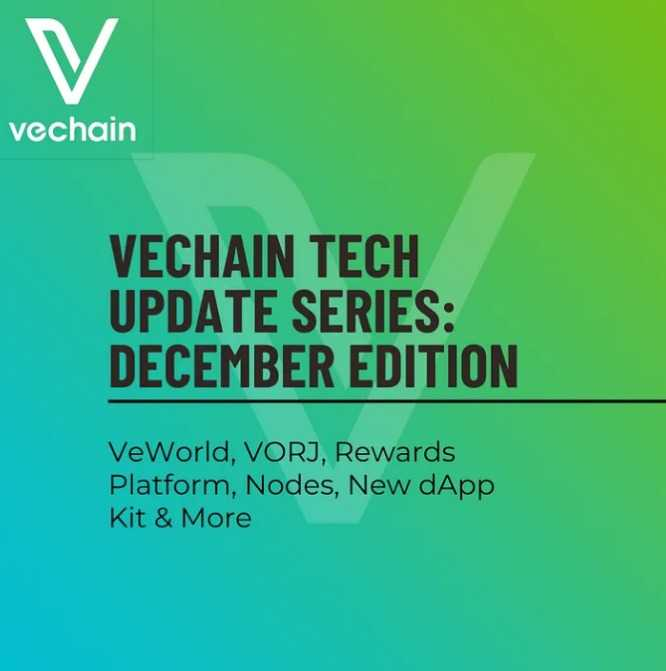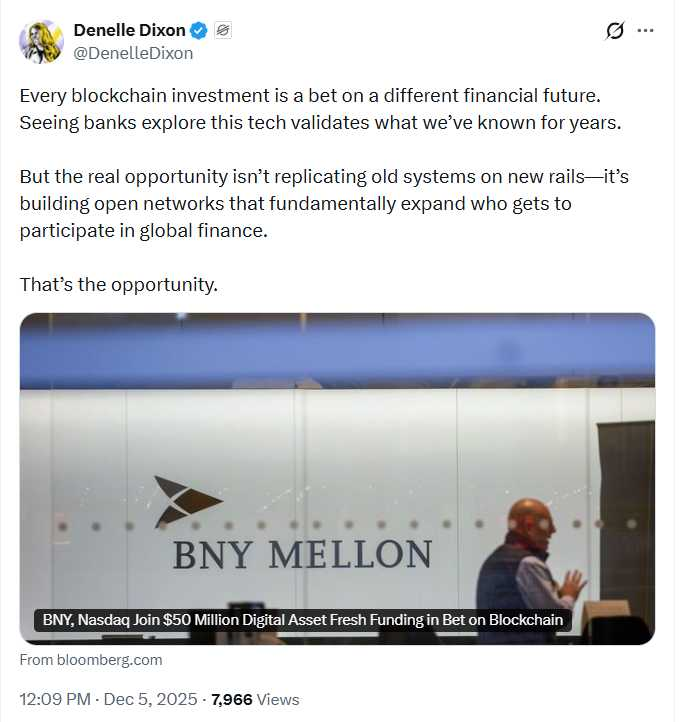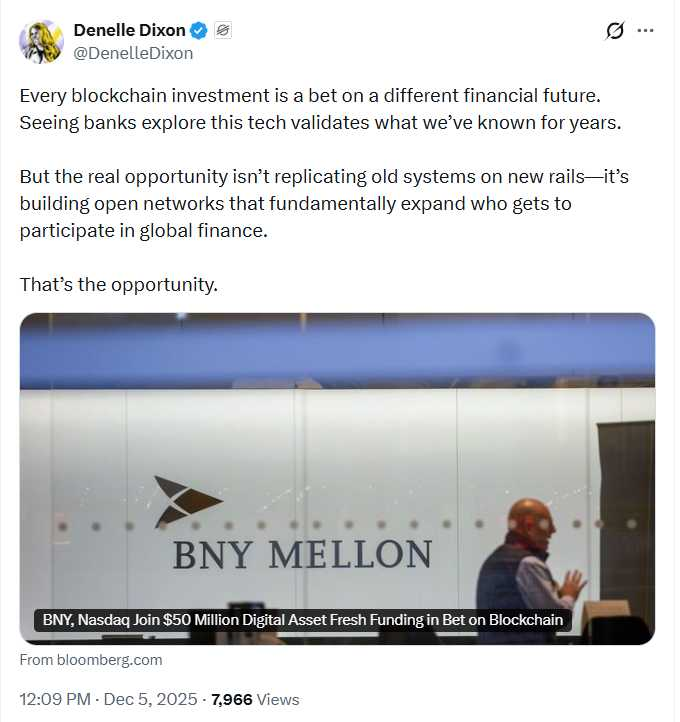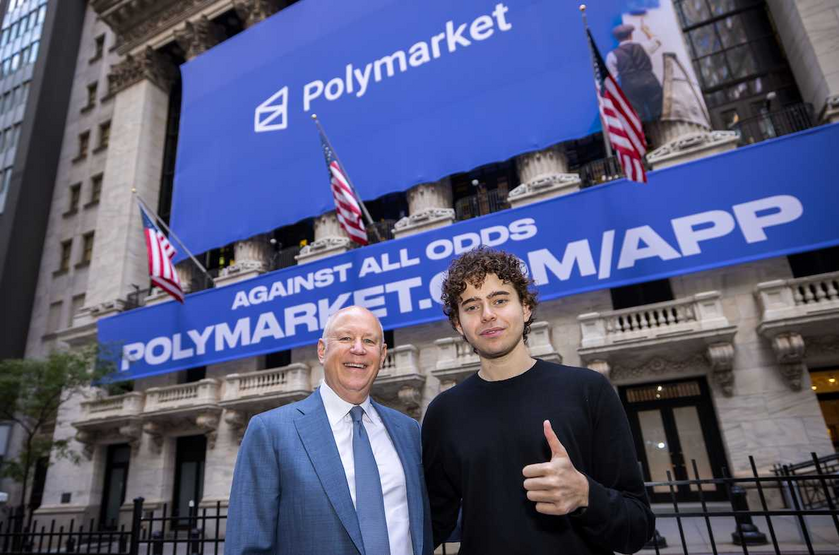Our Technology team has been working tirelessly throughout 2023 to deliver our vision of a robust, well-rounded developer ecosystem ahead of some major ecosystem upgrades taking place in early 2024.
These new tools, products and services continue to expand the capabilities of the VechainThor blockchain, as our teams take inspiration from across the world of crypto assets. We’re incredibly proud of our achievements this year, and next year promises to be even bigger and Better.
Let’s dive in and take a look at what the tech team have been building over the past two months!
VeWorld: Vechain’s New Official Wallet
The VeWorld mobile app has seen impressive uptake to-date, with over 210,000 mobile installations split evenly between Apple and Android users.
With the VechainThor mobile wallet officially being deprecated from the 31st of December (don’t worry, your assets and Keystore remain available), we encourage all users to download VeWorld and import their wallets as soon as possible.
A full guide to migration, including video tutorials, can be found here.
VeWorld dApp Store Update
We will be imminently releasing the much-loved dApp ‘Discover’ tab in VeWorld. With this update in place, VeWorld officially reaches core feature parity with the old mobile wallet.
With its release, users will be able to seamlessly find, access, and interact with their favourite dApps, straight from the VeWorld wallet.
VeWorld Easy Integration For Builders — dApp Kit
For dApps both present and future seeking easy integration with VeWorld, life just got much easier with the launch of our official dApp Kit [linked here]!
Requiring just a few short lines of code, projects can enjoy a greatly simplified VeWorld integration process, allowing them to make use of our powerful new wallet infrastructure.
Fiat On-ramps, Ledger Live
The integration of Coinbase Pay’s fiat on-ramp has allowed users to buy VET directly from VeWorld — a brand new capability for the ecosystem. We aren’t stopping there, however — we will soon be integrating another fiat on-ramp — Coinify — to broaden user choice, and complement the full integration with Ledger Live.
The completion of Ledger Live is due in the second half of December, when VET and VTHO will become fully manageable on the Ledger Live platform. Once formally live, users will be able to purchase VET via Coinify’s fiat on-ramp directly through Ledger Live, storing their digital assets on the platform after purchase.
We continue to evaluate on-ramps and fiat service providers to provide users more choice and the best possible rates for transactions.
VORJ: Web3-as-a-Service — Breaking Barriers To Web3
We’ve been working hard on our flagship product; VORJ, pushing exciting updates and features with a regular cadence.
Alongside Quality of Life updates and improvements to the codebase, we recently added support for ERC-5660 which offers redeemable functionality to ERC-721 smart contracts. This is helping us bridge the gap between physical and digital assets, making VORJ a powerful phygital solution for the masses.
Marketplace as a Service (MaaS)
One of the most exciting upcoming products for VORJ is the first of its kind ‘Marketplace-as-a-Service’ (MaaS) module. Front-end design phase is now complete, with smart contracts recently audited by Hacken, achieving a final score of 9.6/10.
In addition, contracts have been signed with a leading third party NFT Checkout provider to enable card purchases on the MaaS platform. Following the upcoming integration, we’ll work closely with the supplier to integrate their smart contracts on Testnet, moving forward from there.
We are currently working with the product’s first enterprise client to demo and prove the technology — watch this space for updates!
Account Abstraction (ERC-4337) Integration
ERC-4337 Account Abstraction provides a new custody experience for users with the introduction of programmable smart contract wallets, providing an improved user experience and increased security.
Our implementation of ERC-4337 has been developed in conjunction with our friends at Electi Consulting and is currently under audit with established cybersecurity firm, Hacken.
Our objective is to release core account abstraction contracts on Testnet and mainnet pending the result of the Hacken audit. For more detail on account abstraction please see our section in the official docs:
https://docs.vechain.org/core-concepts/account-abstraction.
Token Bound Accounts (ERC-6551)
Token Bound Accounts allow ERC-721 and ERC-1155 tokens to have their own smart contract accounts. Yes, your NFT can have a wallet of its own!
We currently have a working implementation of ERC-6551 working on a Thor Solo node and will release the contracts on both Testnet and Mainnet in the coming weeks.
For more detail on token bound accounts please see the section in our official docs:
https://docs.vechain.org/core-concepts/token-bound-accounts.
The vechain Software Development Kit (SDK)
Our revamped Software Development Kit will greatly streamline the developer guidance, upgrading the current version to provide our builders with the most frictionless experience possible.
We’re happy to report the team is making good progress, and we intend to support the latest version of ethers, align with the hardhat public functions and have a wide collection of executable documentation publicly shared, soon.
We’re building to support our growing developer community even further.
The New Vechain dApp Kit
The vechain dApp kit is a brand new release for the ecosystem, specifically designed to foster development of vechain’s dApp ecosystem.
With it, developers can expect:
Simplified Wallet Management: Leveraging Connex technology, the ‘vechain/dApp-kit’ library offers an additional layer for easier wallet management, aligned with VeWorld and Sync2.
Enhanced UI Components: The ‘vechain/dapp-kit-ui’ library provides an array of UI components, simplifying the process of wallet selection and connection. #
React Integration: For React developers, the ‘vechain/dapp-kit-react’ library includes a set of React hooks and components for seamless integration with the dApp kit.
Language and Framework Support: The dApp kit supports a variety of languages and frameworks, including TypeScript, Vanilla JS, React, Vue, Angular, Svelte, and Next.js, ensuring flexibility and compatibility for a wide range of projects.
Customization and Extensibility: Designed for adaptability, the dApp kit allows for the integration and support of all wallets, with clear guidelines for adding your wallet via pull requests. As of today, we have opened the npm packages for general use.
Head over to the dApp kit docs and check them out!
Node Infrastructure — Health Checker & More
Updates to Node Infrastructure is another key part of our development focus ahead of next year’s plans and beyond. Updates to Node infrastructure are due in three distinct phases:
Health Checker
The Health Checker module repository has recently been open sourced, allowing users to run health checks on nodes and check if they are both running properly and synced with the network.
This module has been live for some time, but now, community nodes will also be able to benefit from integrating this component into node deployments.
More info can be found in the README section of the repo : https://github.com/vechainfoundation/node-healthcheck
Metrics Dashboard
In the second phase, we’ll introduce a metrics dashboard, detailing everything from CPU utilisation, RAM, remaining disk space, requests per second and so on.
Full-Node Deployment Infrastructure
Finally, we will begin the process of making the infrastructure for node deployment fully public.
The rationale is to offer builders all the tools they need to run high quality, reliable nodes, deployable with just a few clicks of a button. In doing so, vechain also ensures a high quality and robust technical backbone.
As always, contributions and comments from community builders are always welcomed and appreciated.
Rewards Platform Updates
Following the successful launch of our new Node Rewards Platform, we’re already launching new iterations!
The second phase of our rewards platform recently went live, enabling the ‘Instant Node Transfer’ and ‘Dutch Auction’ features. With them, you can easily and simply send a Node to a target address, or engage in an auction with a specific address of your choosing.
We’re pleased to share that the Node Marketplace has also officially gone live, meaning users can now bid, auction, sell and transfer their nodes with ease, all while enjoying the more detailed metrics, insights and data the platform has to offer.
A Busy 2023, A Busier 2024
2023 has been a year full of achievements, upgrades and fantastic building spearheaded by the many talented folks working under CTO Antonio Senatore— but we’re nowhere close to being done, yet!
We can’t wait to unveil what we’re working on for 2024. Follow us on X via vechainofficial and join us as our journey unfolds. We promise its only going to get Better from here!
About vechain:
vechain, headquartered in San Marino, Europe, is the curator of VechainThor, a world-leading smart contract platform spearheading the real-world adoption of blockchain technology.
By leveraging the capabilities of ‘trustless’ data (information without intermediaries), smart contracts, and IoT technologies, VechainThor has enabled solutions across a wide array of fields. Vechain now turns its attention to the greatest challenge of all — building digital ecosystems to drive sustainability and digital transformation at global scale.
Visit vechain.org to learn more — or follow @vechainofficial on X to stay updated!




























